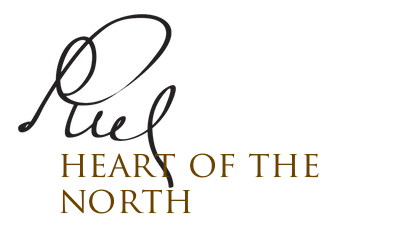
What is Michif?
Michif is a mixed language (NOT a creole) that combines Cree and Métis French, which is itself a dialect of Canadian French. There is some additional borrowing from English and languages such as Ojibwe and Assiniboine. Michif itself is a bit of an umbrella term that covers three different versions of the language: Michif French, Michif-Cree, and Northern Michif (sometimes called Île-à-la-Crosse Michif). Métis in the Red River region also sometimes spoke a kind of English dialect called Bungee or Bungie, which was a combination of Gaelic, English, Cree, and Salteaux.
Languages of the Métis:
N.B.: Before I discuss the different kinds of language spoken by the Métis, I would like to preface this by saying that I am not a linguist, so any mistakes or misunderstandings are due to a lack of technical knowledge on my part.
Michif French: Michif French has not been studied extensively, so it is not completely understood. However, that is not to say it’s a complete mystery: it’s a language that’s still spoken today, albeit by only a handful of people, but it is still a living language. It’s classified as a dialect or variety of French that has been heavily influenced by Algonquian languages such Ojibwe or Plains Cree. As such, it’s quite different from Québec French, especially in the pronunciation of vowels: the ‘o’/‘u’ vowels of French are not distinct in Michif French, instead becoming ‘o’. ‘i’ and ‘e’ are also indistinct in Michif, becoming one sound. This is due to the influence of Algonquian languages, which have fewer vowels than French or English. Michif French also pronounces certain consonants differently than in Québec French:’t’/‘d’ is pronounced like a hard ‘ch’ sound like ‘church’, and ‘k’/‘g’ is pronounced with a hard ‘j’ sound like the ‘j’ in ‘judge’. The differences do not only extend to the pronunciation: grammatical structures are also different. While French has distinct ‘he’/‘she’ (‘il’/‘elle’) terms, Michif has just neutral term, ‘wiiya’, which could be considered closer to a singular version of ‘them’ rather than ‘it’. Finally, the possessive structure of Michif is different from Québec French: for instance, if one were to say ‘my granddaughter’, one would say ‘mon fils sa fille’ (literally ‘my son his daughter’) rather than the French ‘la fille de mon fils’ (‘the daughter of my son’), which is once more derived from the grammatical structures of the Algonquian languages.
Michif-Cree: Michif-Cree is perhaps the oldest and first Michif language. It is less French than St. Laurent Michif (otherwise known as French Michif), and it is more French than Île-à-la-Crosse (or Northern) Michif. It is a language unlike any else in the world.
Île-à-la-Crosse Michif: Île-à-la-Crosse Michif is similar to Michif-Cree in that it combines French and Cree, however it is different in that its base is in Woods Cree rather than Plains Cree, and it uses less French than Michif-Cree.
Bungee: Bungee is a now all-but extinct language that combined French, Gaelic, Salteaux, and Cree to make a unique language of its own.

A quick guide to the different influences on Métis languages.
Examples:
The following photographs are accompanied by translations into Michif-Cree, provided by the 2013 Métis Dictionary written by Norman Fleury, a man who is arguably the Samuel Johnson of the Métis community.

enn lozh – a tipi (First Peoples Buffalo Jump, Montana)

lii pchit mitenn – mittens

aen lizaar – a lizard (the greater short-horned lizard in fact!)

li traamb – an aspen (Grasslands National Park)

la rivyayr – the river (Missouri River)
